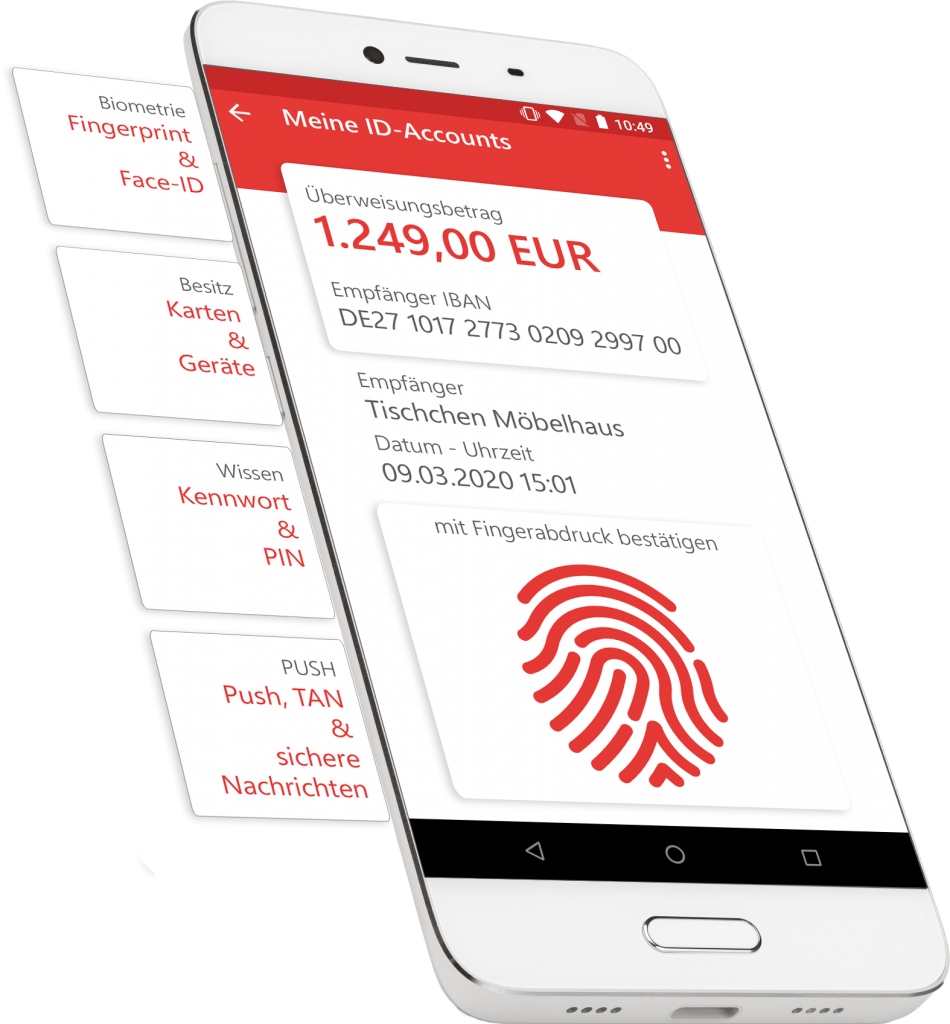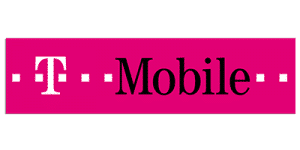SIGN - Push & TAN services

Push app with immediate authorisation
SIGN – Advantages for the bank
Savings totalling millions of Euros on traditional providers and TAN costs. In the event of a process change or security problems, no additional hardware costs anymore.
Tremendous increase in security levels thanks to the encrypted transmission of transaction-related data. Thanks to CORONIC’s hardening of the software, SIGN is significantly more secure than any other app.
Simple and inexpensive adaptation of all future banking processes thanks to streamlined software changes. No dependence on rigid telecom providers (SIM cloning) or complex adaptations to the bank’s backend.
Phishing is expensive. Additional personnel is required for consultations, analysis and sometimes for court cases. This is why we say: "Push, not text".
BaFin (the German Federal Financial Supervisory Authority) only allows the parallel operation of two logically-separate channels on one and the same physical device if it combines a hardened mobile app and a hardened push app.
When changing from mobile TANs or SMS TANs to push-based services, the bank will save on its texting bill. Depending on the mobile operator, the cost will drop from 5 to 8 cents per text to 1 to 2 cents per push notification.
The Messenger function in SIGN allows the transmission of documents to end clients. This means that in the event of changes to General Terms and Conditions, contracts, interest rates and so on, the bank can save on postage.
Thanks to SIGN's migration function, when a client changes mobiles or when he/she switches from a smartphone to a tablet computer, there is no need for new INI letters and other authorisation processes anymore. The client can generate a migration code and can transfer all data onto the new device with the app.
SIGN – Product details
If the Apple or Google cloud services should be unavailable (push channel), the TAN will be provided on a separate, secure poll channel.
As a Java web application, the server components can run in all data centres. This means that banks can operate their critical infrastructure themselves, or use CORONIC as their service provider.
Thanks to a virtual mobile phone number, all former SMS-based banking processes can be carried out without having to make technical changes to the data centre or bank.
The virtual migration of telephone numbers is a function thanks to which an existing SIGN account can be transferred from an old to a new mobile– without requiring an INI letter from the bank.
Thanks to the virtual phone number, the simultaneous installation and multiple use of the app is possible on several terminal devices at any given time.
SIGN uses an advanced encrypted authorisation concept that means it can be opened and used by means of various devices, such as a SmartWatch, instead of requiring an app password.
The transaction number (TAN) for the authentication of a transfer can be fully replaced by a confirmation screen.
The app has a messaging client that is encryption-protected, so it can be used for client information and as a protected channel to send confidential documents to the customer.

The CORONIC ID App can authenticate everyone

„Die hohen Nutzungszahlen und das durchweg positive Feedback unserer Kunden bestätigen, dass der Einsatz des Computerchecks richtig war. Auch der schnelle und kompetente Support bei Kundennachfragen ist positiv hervorzuheben und unterstützt den Sicherheitsgedanken beim Kunden und bei unseren Mitarbeitern.“

„Mit dem Sparkassen-Computercheck erreicht man sehr gut die Kümmerer, d. h. die Kunden, die sich Gedanken um die Sicherheit ihres PCs machen. Der QuickCheck soll auch die Sorglosen erreichen, indem er als automatischer Schnelltest beim Login ins Online-Banking abläuft und bei schweren Sicherheitsmängeln den Kunden warnt.“

"Coronic züchtet den "digitalen Wachhund." Software-Firma entwickelt sicheren Browser und gewinnt sowohl Banken als auch die Bundeswehr als Kunden."
"Mit dem gehärteten Browser VR-Protect verfügen wir über ein echtes Alleinstellungsmerkmal in puncto Sicherheit im Online-Banking. Unseren Kunden ein absolut sicheres Online-Banking garantieren zu können, ist in der heutigen Zeit ein echter Mehrwert - und passt zu unserer Positionierung als Partner in allen finanziellen Angelegenheiten. Wir empfehlen unseren Kunden die Nutzung von VR-Protect ausdrücklich!“
„Wir setzen den gehärteten PROTECT Browser der Firma CORONIC seit eineinhalb Jahren bei unseren Mitarbeitern und Kunden erfolgreich ein. Das Produkt hat zu äußerst positiven Reaktionen bei allen unseren Kunden geführt und ist inzwischen zu einem unverzichtbaren Bestandteil unserer hausinternen Sicherheitsstrategie beim Online-Banking geworden.“
„Als genossenschaftliches Institut liegt uns die Sicherheit unserer Mitglieder sehr am Herzen. Wir haben uns daher schon 2013 für den gehärteten Browser der Firma CORONIC entschieden. Ab April 2014 wird VR-PROTECT in unserem Online-Kontomodell als feste Größe mit Zertifikat verankert."

"Gehärtete Banking-Browser, wie VR-Protect, bieten dem Kunden auf dem PC den gleichen Komfort wie die Webseite der Bank, sind aber vollkommen immun gegen Schädlinge. VR-Protect schützt effektiv vor Angriffen und die Bank kann so weitere Kunden für ihre Onlineangebote gewinnen...."

"In den Jahren 2008 bis 2013 haben wir einen Analysten / Designer der Firma CORONIC aus Kiel eingesetzt. Der Mitarbeiter verfügte über exzellente technische und fachliche Fähigkeiten. Er hat sich sehr gut in das Team und unsere Themen eingearbeitet und ist so zu einem unverzichtbaren Bestandteil der Softwareanalyse geworden."

"Wir haben Coronic von der Gründung bis zur Rückzahlung unserer Finanzierung über einen Zeitraum von 10 Jahren begleitet. In der Zeit haben wir nicht nur den Markterfolg innovativer Produkte und des Unternehmens miterlebt, sondern hatten es in den 10 Jahren unserer aktiven Geschäftsbeziehung immer auch mit einem verlässlichen und fairen Partner zu tun, der letztlich auch maßgeblich zum Erfolg unseres Engagements beigetragen hat."

"Die CORONIC GmbH unterstützt und berät die VR-NetWorld seit vielen Jahren bei den Themen Internet und Online-Sicherheit. Wir haben das Unternehmen dabei steht als innovativen, kompetenten und fairen Partner erlebt, auf dessen Know-how und Produkte wir immer gerne zurückgegriffen haben."

„Wir kennen die Firma CORONIC als technischen Dienstleister für Banken und Zahlungsverkehr und haben ihre Konzepte aus dem Biometrie-Bereich auf rechtliche Konformität hin überprüft. Das Unternehmen hat hier eine elegante technische Lösung präsentiert.“
